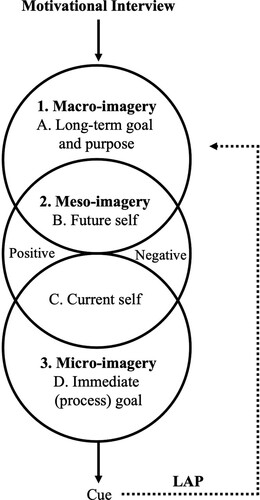Figures & data
Figure 1. After an initial motivational interview, imagery is trained. The circles represent the three stages of imagery and the four levels (A–D) represent the order at which goals are explored, including positive and negative outcomes. Finally, a motivational cue is developed, which links imagery activation to implementation. The dotted line represents the independent application for the athlete who reinforces practice through LAP.

